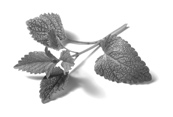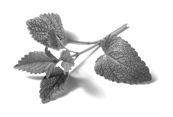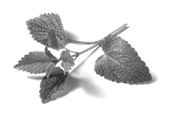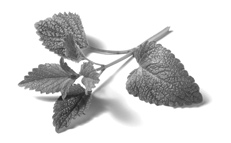Hepraf–ext.indd

Herbal Prescriptions after 50
By David Hoffmann
Foreword by Cheri Quincy, D.O.
What Herbal Medicine Can Offer Us as We Age
Categories of Herbal Action
Choosing Herbs for Health
Postoperative Care
Assessment of the Herb's Impact
Herbal Approaches in Illness and Health
The Digestive System
The Digestive System in Health
The Aging Digestive System
Keeping the Digestive System Healthy
Gastrointestinal Distress
Herbs and the Digestive System
Conditions: Canker Sores • The Teeth, Pyorrhea, and Gingivitis • Esophagitis and Gastroesophageal Reflux • Gastritis • Peptic Ulceration • Hiatus Hernia • "Indigestion" • The Colon • The Liver • Gallbladder Inflammation • Gallstones • Hemorrhoids
The Cardiovascular System
Important Actions for the Cardiovascular System
Maintenance of Cardiovascular Health
Conditions: Arteriosclerosis • Congestive Heart Failure •
Recovery from a Heart Attack • Angina Pectoris • HypertensionVaricose Veins • Intermittent Claudication • Cold Hands and Feet
The Pulmonary System
Herbal Expectorants
Tonics for the Lower Respiratory System
Conditions: Coughs • Acute Bronchitis • Chronic Bronchitis •
Asthma • Emphysema
The Upper Respiratory System
The Nervous System
Conditions: Stress • Depression • Insomnia • Headaches
and Migraines • Peripheral Neuropathy •Tinnitus • Shingles • Dementia and Alzheimer's Disease
The Urinary System
Maintaining Health
Conditions: Frequent Urination • Painful Urination • Water Retention • Cystitis • Kidney Stones • Flu
The Reproductive System
Herbal Actions for the Female Reproductive System
Climacteric and Menopause
Physical Changes following Menopause
Atrophic Vaginitis
Uterine Fibroids
The Male Reproductive System
Benign Prostate Enlargement
Muscles and Bones
Herbal "Antirheumatics"
Herbal Anti-inflammatories
Important Musculoskeletal Remedies
External Applications
Nonsteroidal Anti-inflammatory Drugs
Conditions: Arthritis • Osteoporosis • Gout • Bursitis and Tendinitis
What Happens to Skin as It Ages?
Herbal Actions for the Skin
Salves, Ointments, Poultices, Lotions
Herbal "First Aid" for the Skin
Conditions: Eczema • Psoriasis • Dry Skin • Fungal Skin Infections • Hair
Immunity and Wellness
Herbs for the Immune System
Immunological Actions
Immune System Illnesses
An Herbalist's Approach to Infection
Cancer: A Holistic Approach
Herbal Cancer Therapy
The Endocrine System
The Adrenal Glands
The Thyroid Gland
The Pancreas and Diabetes
Herbal Medicine Making
Dry Herb Preparations
Formulations for the Skin
Balm (Lemon Balm)
Bearberry (Uva-Ursi)
Bogbean (Buckbean)

California Poppy
False Unicorn Root

Fringe Tree Bark
Heartsease (Pansy)
Jamaican Dogwood

Shepherd's Purse

Wild Cherry Bark
Useful Addresses

The Digestive System
Herbs are an unequaled form of medicine for treatment of the digestive system. Many beneficial effects are due to the metabolism and absorption of the whole range of plant constituents; others are brought about by a direct action upon the tissue through contact. Because much digestive illness in our society is due to abuse (overly processed foods, chemical additives, and irritants such as alcohol and carbonated drinks), the direct soothing of demulcents, the healing effect of astringents, and the general toning of bitters can do much to reverse this damage.
It has been estimated that gastrointestinal distress in one form or another affects some 200,000 Americans daily severely enough to keep them from work. This highlights the importance of knowing the difference between an innocuous upset and a serious one. Here are types of digestive discomfort that are likely to be innocuous:
• Reflux or heartburn, caused by eating or drinking too much or eating foods
that "disagree" with the person.
• Excess stomach gas, the most common cause of discomfort, which can cause
feelings of bloatedness, discomfort, mild pain, and social embarrassment.
• Indigestion, a very vague term used to describe almost any stomach discom-
fort. Symptoms include gas, belching and flatulence, a feeling of distention in the stomach, and minor pain.
2 The Digestive System
• Lactose intolerance, caused by a deficiency of lactase, an enzyme that digests
lactose, a dietary sugar. If a milk product is consumed, the undigested lactose causes distention, gas, nausea, diarrhea, and cramps.
• Stomach flu symptoms include nausea, vomiting, diarrhea, and cramps.
• Drug reactions. Many drugs interact with gastric acid, sometimes caus-
ing cramps, severe diarrhea, heartburn, or indigestion. Antibiotics and anti-inflammatory drugs are the most common causes. Aspirin can cause heartburn, indigestion, stomach irritation, ulcers, and internal bleeding.
• Irritable bowel syndrome. Symptoms include "butterflies" in the stomach,
diarrhea or constipation, cramps, nausea, indigestion, and gas.
If these generally benign signs occur at least two to four times a month, if
there is no obvious cause, or if they are extremely painful or distressing, a more serious condition may be present. Discomfort in the abdomen may be caused by any of several conditions such as:
Peptic ulcers, a gnawing, burning pain that may feel like hunger pangs but that
generally comes one to two hours after eating or when the stomach is empty.
Diverticulitis. Symptoms include fever and a dull, steady pain on the lower left
side of the stomach that worsens when you move around.
Gallstones. The first symptom is often a tightening just below your ribs. Extreme
pain usually occurs in waves on the right side of your upper abdomen, extend-ing all the way around to the middle of the back and possibly up to the right shoulder blade.
Kidney problems, such as kidney stones, can cause excruciating waves of pain
in the middle of the back on either side, at the point where the ribs join the spine.
The following is the herbal prescription for peptic ulcers.
Peptic Ulceration
Ulcerative conditions of the stomach, duodenum, and esophagus are very com-mon in our society; hence nonprescription symptomatic relief medicines are major moneymakers for the pharmaceutical industry. Drug treatment is based
The Digestive System 3
primarily upon reduction of the corrosive impact of stomach acid on the muco-sal lining. A range of plants are available that appear to work in a broader way to facilitate a reversal of the particular syndrome.
Peptic ulcers usually have a chronic, recurrent course, with a variable symp-
tom picture. In fact, only about half of all ulcer patients present the character-istic picture of burning or aching pain, or a distress described as soreness, an empty feeling, or "hunger pains." Epigastric pain is relieved by antacids or milk. The typical picture in duodenal ulcers is that of hunger pains, whereas pain in gastric ulcers may be brought on by eating.
The skilled application of plants with demulcent, antacid, astringent, and
vulnerary actions can bring about a rapid and complete healing of any ulcer-ation. Herbs such as comfrey, marshmallow, meadowsweet, calendula, chamo-mile, and goldenseal are examples of remedies that may be used.
Successful herbal therapy in the treatment of peptic ulceration is a two-stage
1. To reduce inflammation and initiate healing using demulcents and vulneraries:
n marshmallow root 1 partn chamomile
As tincture: take 1 tsp (5 ml) of this mixture 3 times a day.
As dried herb: infuse 2–3 tsp to a cup and drink 3 times a day.
Infusion of the fresh or dried herbs may be drunk often to ease symptoms.
Balm or chamomile infusion drunk on an empty stomach will reduce inflammation and help reverse the ulcerative process.
2. To tone and complete healing:
As tincture: take 1 tsp (5 ml) of this mixture 3 times a day.
CAUTION: If symptoms have not subsided within a week, seek skilled
diagnosis.
4 The Digestive System
Dietary factors are fundamentally involved in both the causation and treat-
ment of peptic ulceration. In some cases ulceration may be due to a specific food allergy, but the condition will always be aggravated by exposure to irri-tants. Pepper, coffee, and anything that you experience as a problem should be removed from your diet. Among nondietary factors, alcohol and tobacco are especially implicated. Avoidance of aspirin and other nonsteroidal anti-inflammatories is essential. Increasing fiber in the diet has been shown to reduce the rate of recurrence; however, a bland diet is recommended in the early stages of treatment to avoid physical irritation. Rest and reevaluation of a lifestyle that may be causing stress is important. An individually designed stress man-agement program should be a priority.
Recommended supplements to support the herbal work include:
n vitamin A: 20,000 IU 3 times a day
n vitamin C: 500 mg 3 times a day
(take with food to avoid irritation of the ulcer)
n vitamin E: 100 IU 3 times a day
n zinc: 20 mg daily
Source: http://www.manumu.no/Customers/janerik2/documents/pdf%20boeker/Excerpt_herbal_prescriptions_after_50.pdf
MSK ICATS – Spine Primary Care Management, Referral Thresholds and Management Pathways v10 FINAL Thresholds for Primary Care Management Pathway for the Referral reason / Primary Care Management to initiate a MSK ICATS clinicians (inc Patient presentation
VOL 1 NUMERO 2. AGOSTO 2008 Trabajos de Investigación Caracterización de Perfiles Proteicos y Peptídicos en Characterization of Protein and Peptide Profiles in Chronic Dr. Jorge Gamonal A. Periodontitis. Hernández M, Obregón F, Pozo P, Barriga A, Valenzuela MA. 53 Prof. Dr. Javier Botero. Univ. del Valle, Colombia.






